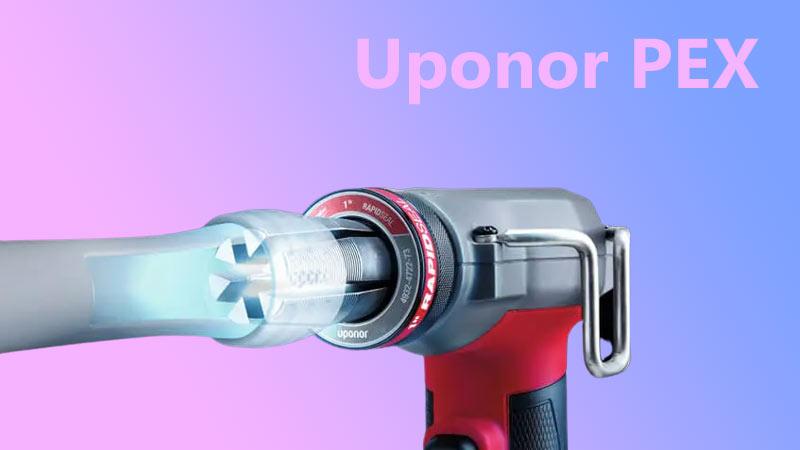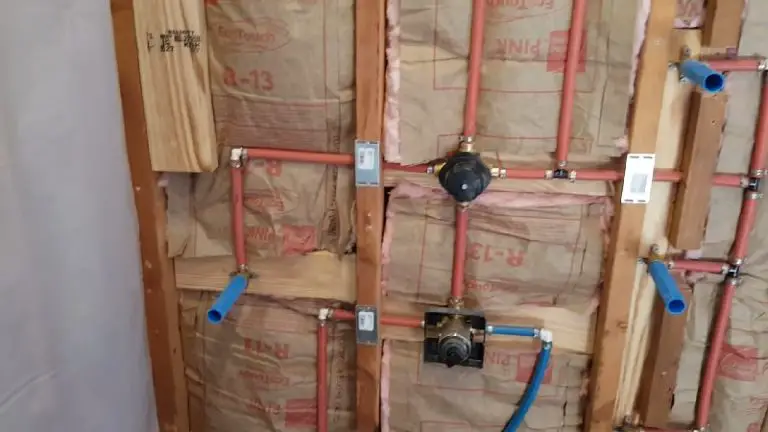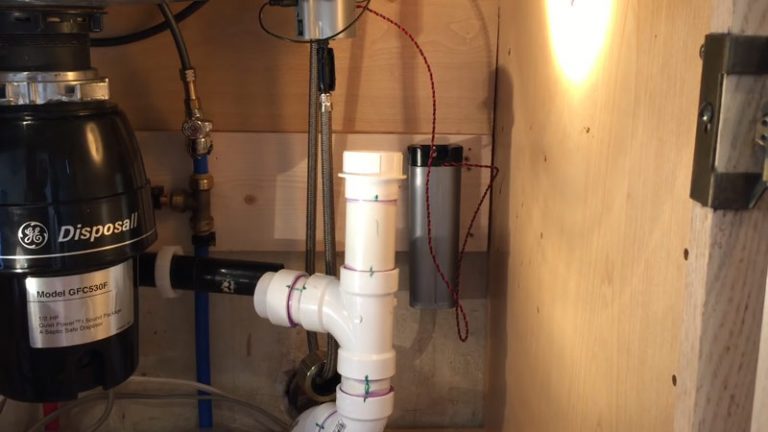How Much Uponor Wait Time is Needed?

Uponor is a company that specializes in the production of PEX (polyethylene crosslinked) tubing and fittings for use in plumbing, heating, and cooling systems. Uponor PEX is known for its durability and resistance to corrosion and freezing, making it an ideal choice for a wide range of applications.
However, like any plumbing system, Uponor PEX can be subject to leaks if not installed or maintained properly. In this article, we will discuss some common causes of leaks in Uponor PEX systems and how to prevent them.
You'll Learn About
Uponor Wait Time
Uponor recommends waiting at least 20 minutes for the PEX to fully seat on the fitting after expanding it with the tool. This allows the PEX to properly clamp down on the fitting and create a secure, leak-free connection.
Waiting longer than 20 minutes may not cause any harm, but it is not necessary for the fitting to be secure. In some cases, waiting for a longer period of time may even cause the PEX to shrink slightly, which could potentially lead to leaks if the fitting is not seated properly.
It is important to make sure the PEX is fully seated on the fitting before pressurizing the system. If the PEX is not fully seated, it may not clamp down properly on the fitting, which could result in leaks.
If you are unsure whether the PEX is fully seated on the fitting, it is best to test the connection before pressurizing the system. This can be done by carefully pressurizing the line and checking for leaks. If any leaks are detected, the PEX should be expanded again and allowed to seat for at least 20 minutes before testing again.
In summary, the recommended wait time for Uponor PEX to fully seat on the fitting after expanding is 20 minutes. This allows the PEX to properly clamp down on the fitting and create a secure, leak-free connection. It is important to make sure the PEX is fully seated on the fitting before pressurizing the system, and to test for leaks if you are unsure.
Factors that can Affect the Wait Time
Here is a list of factors that can affect the wait time for the Uponor PEX systems:
Temperature
In colder temperatures, the PEX may take longer to fully seat on the fitting. This is because the PEX will be more rigid and less pliable, which can make it harder for it to clamp down on the fitting properly. It may be necessary to wait longer in cold temperatures to ensure that the PEX is fully seated and able to create a secure connection.
Type of fitting
The type of fitting used can also affect the wait time. Fittings with deeper or more complex shapes may require more time for the PEX to fully seat and create a secure connection. It may be necessary to wait longer for these types of fittings to ensure that the PEX is able to properly clamp down on the entire fitting.
Type of expansion tool
The type of expansion tool used can also impact the wait time. Tools with higher expansion ratios may require more time for the PEX to fully seat on the fitting. It may be necessary to wait longer when using these types of tools to ensure that the PEX is able to properly clamp down on the fitting.
Condition of the PEX
The condition of the PEX can also affect the wait time. If the PEX is old or has been damaged in some way, it may not be able to properly clamp down on the fitting. In these cases, it may be necessary to wait longer to ensure that the PEX is able to create a secure connection.
Best practices for ensuring that Uponor PEX is fully seated on the fitting
You should follow these best Practices:
Use a high-quality expansion tool
Using a high-quality expansion tool is essential for ensuring that the PEX is able to properly clamp down on the fitting. Tools with higher expansion ratios and more precise expansion settings can help to ensure that the PEX is fully seated on the fitting.
Follow the manufacturer’s instructions
It is important to follow the manufacturer’s instructions when expanding and seating the PEX on the fitting. These instructions will provide guidance on the appropriate wait time and other factors that can affect the ability of the PEX to create a secure connection.
Test the connection before pressurizing the system
Before pressurizing the system, it is a good idea to test the connection to ensure that the PEX is fully seated on the fitting. This can be done by carefully pressurizing the line and checking for leaks. If any leaks are detected, the PEX should be expanded again and allowed to seat for at least 20 minutes before testing again.
Use a UV-resistant packing
Storing the PEX in a UV-resistant packing can help to protect it from damage caused by exposure to sunlight. This can help to ensure that the PEX is able to properly clamp down on the fitting and create a secure connection.
Common causes of leaks in Uponor PEX systems
Here are the common causes of leaks in the Uponor PEX systems:
Improperly seated PEX
If the PEX is not fully seated on the fitting, it may not clamp down properly, which can result in leaks. It is important to make sure that the PEX is fully seated on the fitting before pressurizing the system.
Damaged PEX
PEX can be damaged by a variety of factors, including exposure to sunlight, chemicals, or sharp objects. If the PEX is damaged, it may not be able to properly clamp down on the fitting, which can result in leaks.
Incorrectly sized PEX
Using PEX that is not the correct size for the fitting can result in leaks. It is important to use PEX which is the correct size for the fitting in order to ensure a secure, leak-free connection.
Poorly installed fittings
If the fittings are not installed correctly, it can result in leaks. It is important to follow the manufacturer’s instructions when installing fittings in order to ensure a secure, leak-free connection. Leaks can cause sink backing-up problems.
Degraded PEX
Over time, PEX can degrade and become less able to clamp down on the fitting properly. This can result in leaks. Regularly inspecting the PEX and replacing it if necessary can help to prevent leaks caused by degraded PEX.
Incorrect expansion ratio
Using an expansion tool with the incorrect expansion ratio can result in leaks. It is important to use an expansion tool with the correct expansion ratio in order to ensure that the PEX is able to properly clamp down on the fitting and create a secure, leak-free connection.
Frequently Asked Questions
What is Uponor PEX?
Uponor PEX is a type of polyethylene crosslinked tubing that is commonly used in plumbing, heating, and cooling systems. It is known for its durability and resistance to corrosion and freezing, making it an ideal choice for a wide range of applications. It can cause problematic water.
What are some common causes of leaks in Uponor PEX systems?
Some common causes of leaks in Uponor PEX systems include improperly seated PEX, damaged PEX, incorrectly sized PEX, poorly installed fittings, degraded PEX, and incorrect expansion ratios.
How can I prevent leaks in my Uponor PEX system?
To prevent leaks in your Uponor PEX system, it is important to follow best practices for installation and maintenance and to regularly inspect the PEX for signs of damage. It is also important to use high-quality expansion tools and fittings and to follow the manufacturer’s instructions when installing and maintaining the system.
What should I do if I have a leak in my Uponor PEX system?
If you have a leak in your Uponor PEX system, the first step is to determine the cause of the leak. This can often be done by carefully inspecting the PEX and fittings for signs of damage or improper installation.
Once the cause of the leak has been identified, it can usually be repaired by replacing the damaged PEX or fitting it and re-installing it correctly. If you are unsure how to repair the leak, it is best to contact a professional plumber for assistance.
To Recap
There are a number of common causes of leaks in Uponor PEX systems. These include improperly seated PEX, damaged PEX, incorrectly sized PEX, poorly installed fittings, degraded PEX, and incorrect expansion ratios. By following best practices for installation and maintenance, and regularly inspecting the PEX for signs of damage, it is possible to prevent leaks and ensure that the Uponor PEX system operates effectively and efficiently.


